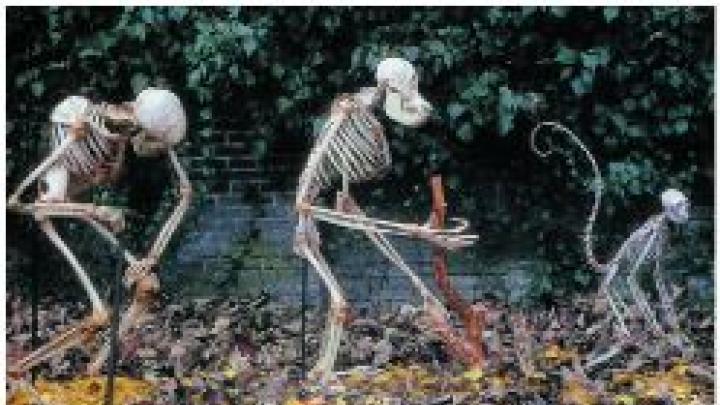Crossing Over: Where Art and Science Meet, essays by Stephen Jay Gould, professor of geology, Agassiz professor of zoology, and curator of invertebrate paleontology in the Museum of Comparative Zoology, and photographs by Rosamond Wolff Purcell (Three Rivers Press/Crown, $27.50, paper). This third collaboration by Gould and Purcell will prompt us, the cover blurb promises, "to ponder not only the basis of the false dichotomy between art and science, but also the distinction of mind and nature, and of all humanly imposed categories of order." The result is astonishing.
Breaking Out: VMI and the Coming of Women, by Laura Fairchild Brodie '86 (Pantheon, $26). Brodie offers a well- crafted chronicle, from various points of view, of the first year of coeducation at Virginia Military Institute. According to Drew Gilpin Faust, dean of the Radcliffe Institute, she "does a wonderful job of demonstrating the pressures for both continuity and change."
The Lynching Tree, by Michael Stein '81 (Permanent Press, $24). A slim, sober, strong novel about race, service, and rage. A white man is found lynched on a golf course in New Jersey, and a young black policeman tries to learn who did it. Stein, a physician, teaches at Brown University; this is his third novel.
Decoding Darkness: The Search for the Genetic Causes of Alzheimer's Disease, by Rudolph E. Tanzi, Ph.D. '90, professor of neurology, and Ann B. Parson (Perseus, $26). As a young neurogeneticist in the early 1980s (moonlighting as a rock musician), Tanzi put himself at the center of the search for the gene responsible for Alzheimer's, and he has been there ever since. He joins here with journalist Parson to produce a clear and gripping scientific detective story with a happy ending to come--Alzheimer's, they believe, may be effectively treated, even prevented.
Raptor, by Dorsey Fiske '61 (Forge, $22.95). The heroine of this literate thriller is a watercolorist, but to make a living she works as a police sketch artist and detective. She's after a serial rapist.
 |
| Sheet music cover of the 1930s, from Holy Day, Holiday. "Mothers were encouraged to prevent children from exhausting their fathers," notes the author. They needed their rest. |
| Sam DeVincent Collections of Illustrated Sheet Music Covers, Archives Center, National Museum of American History, Smithsonian Institution |
Holy Day, Holiday: The American Sunday, by Alexis McCrossen, A.M. '90 (Cornell University Press, $39.95). This is an illuminating cultural history by an assistant professor of history at Southern Methodist University. In the 24/7 U.S.A., some of the nineteenth-century disputes that she recounts about the meaning of Sunday seem pretty funny.
The Gospel according to theNew York Times: How the World's Most Powerful News Organization Shapes Your Mind and Values, by William Proctor '63, J.D. '66 (Broadman & Holman, $14.99, paper). The author, who has written for the New York Daily News, dedicates his book "to news addicts everywhere--especially those who have been hoodwinked into believing that there is any such thing as objectivity in journalism."
Magician of the Modern: Chick Austin and the Transformation of the Arts in America, by Eugene R. Gaddis (Knopf, $35). A. Everett "Chick" Austin '22 became director of Hartford's Wadsworth Atheneum when he was 26 and introduced modern art to America, passionately. It was said of Austin that he was "a whole cultural movement in one man" (composer Virgil Thomson '22), that he "knew what everything good was--first, before everyone else" (ballet force Lincoln Kirstein '30), and that "he was the center around which things revolved" (architect Philip Johnson '27). Gaddis is archivist and curator at the Atheneum, and he has written a fine biography.
With Love and Prayers: A Headmaster Speaks to the Next Generation, by F. Washington Jarvis '61 (Godine, $25). Jarvis is an Episcopal priest and headmaster of Roxbury Latin School (for 26 years), and this is a collection of 40 addresses to his charges. "This is strong stuff: God, courage, service, faith," writes Rev. Peter J. Gomes, B.D. '68, in a foreword. "In any context it would be worthy of notice and comment, but in an age in which the young are fed little more than self-confirming drivel from elders who fear to lead and at best can only sell, this kind of thinking out loud can seem positively incendiary." Teenagers, writes Jarvis, "are almost always willing to listen to adults who actually believe in something...."








